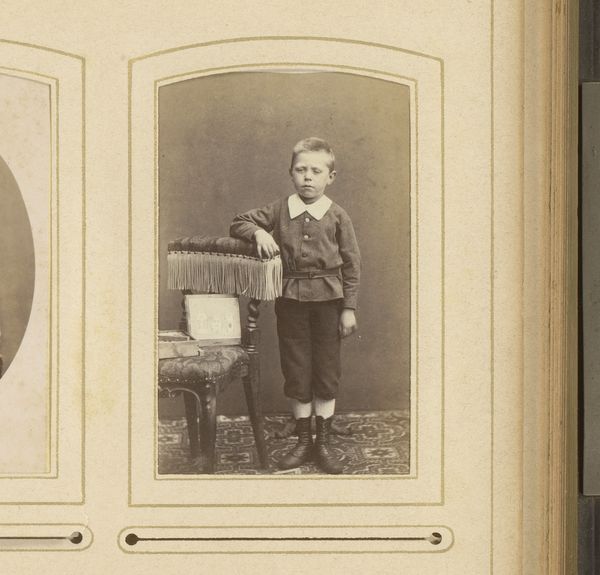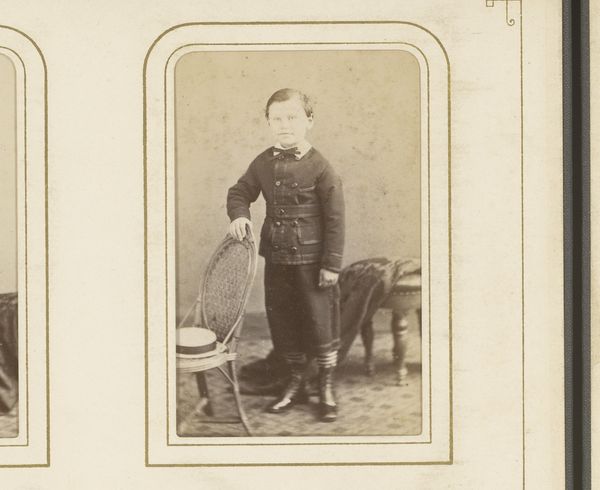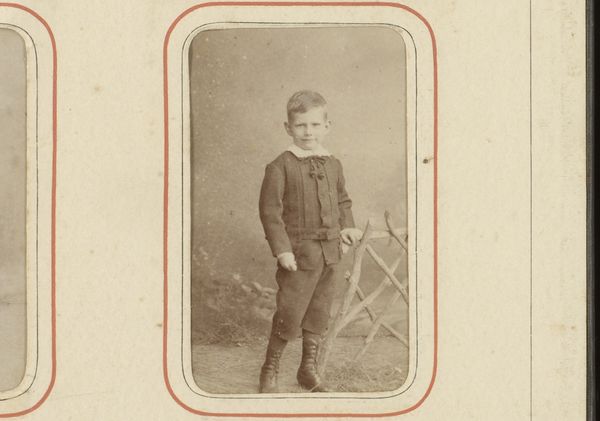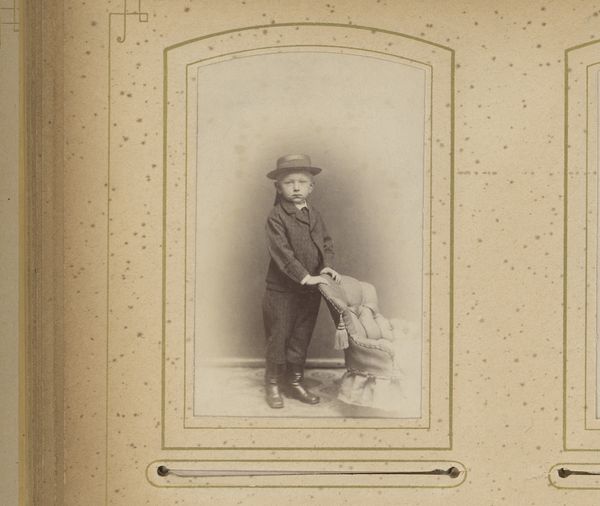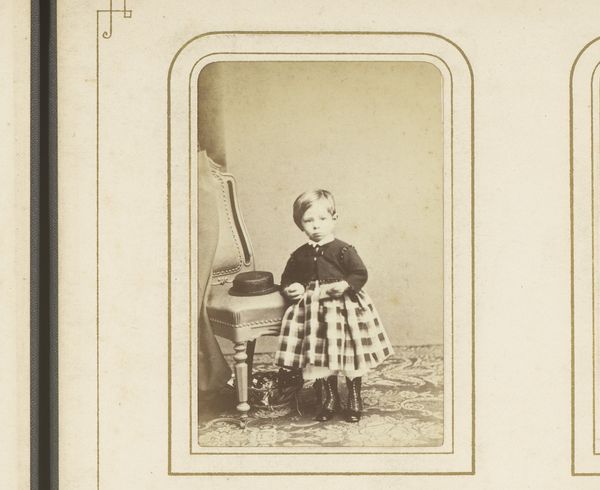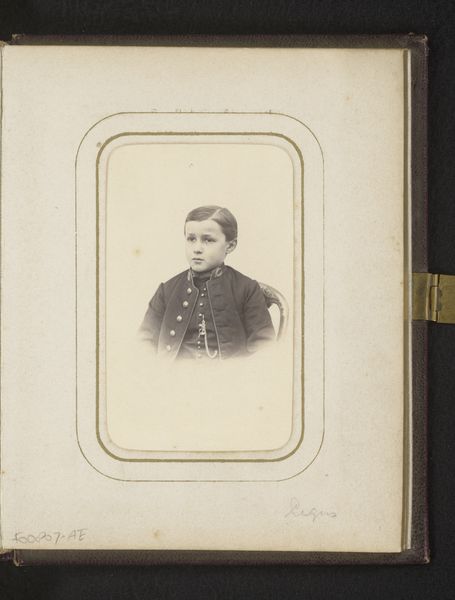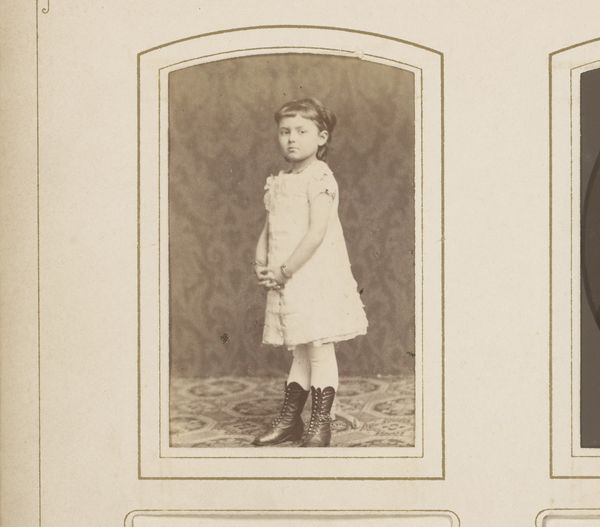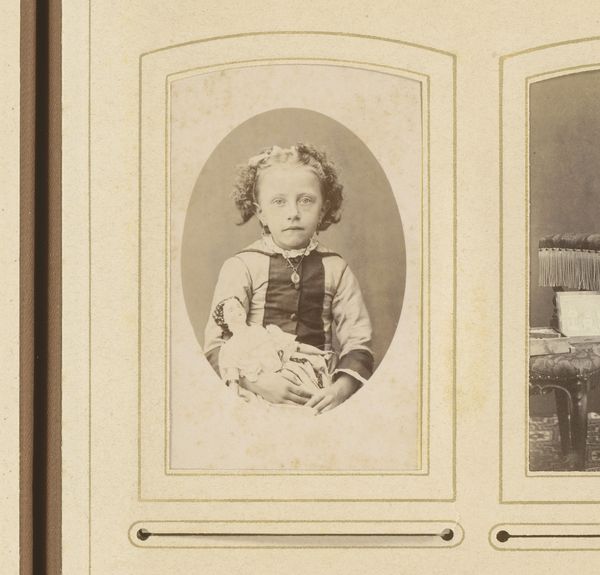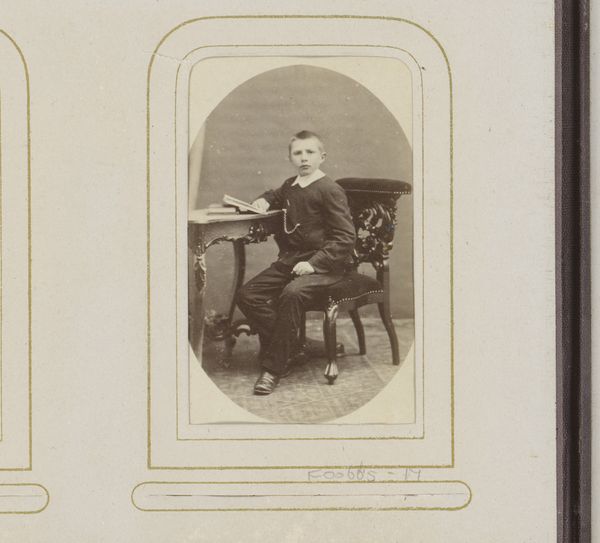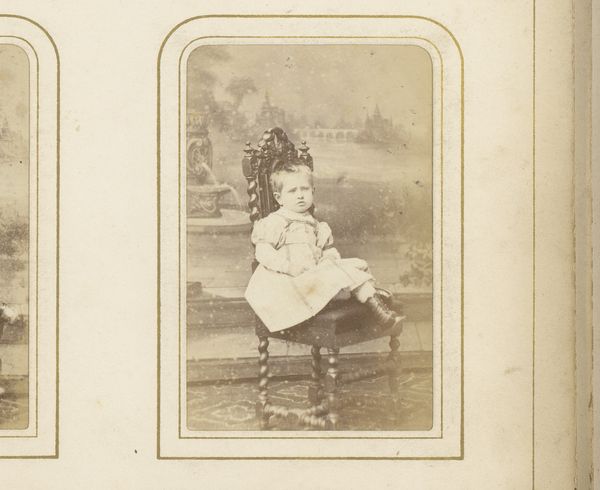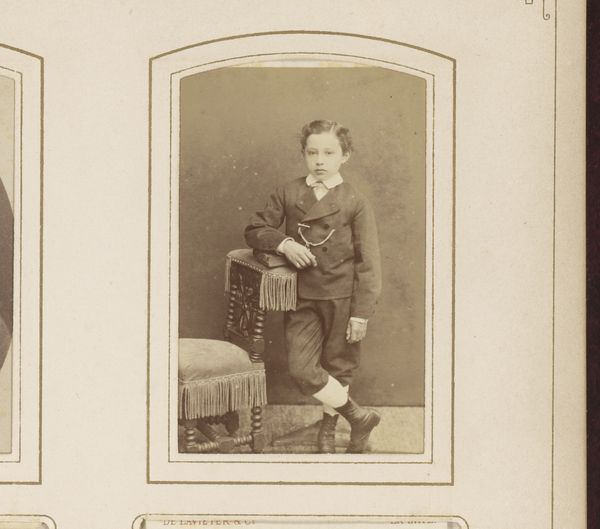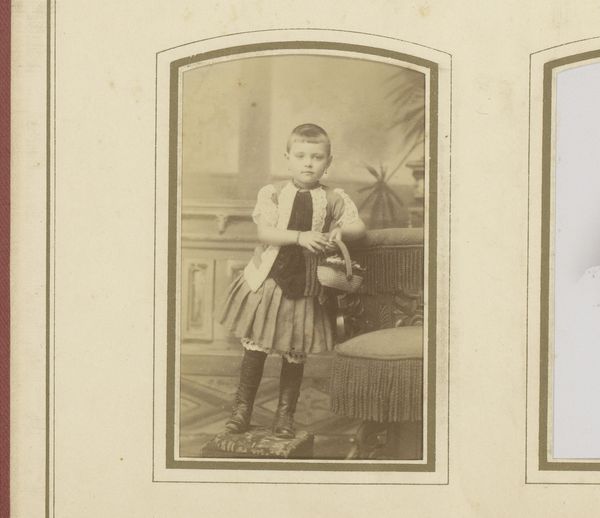
Napoleon Eugène Lodewijk Bonaparte in Camp de Châlons nabij Châlons-en-Champagne after 1860
0:00
0:00
photography, albumen-print
#
portrait
#
photography
#
historical photography
#
academic-art
#
albumen-print
Dimensions: height 103 mm, width 70 mm
Copyright: Rijks Museum: Open Domain
Curator: Here we have an albumen print, a photographic portrait taken sometime after 1860. The inscription identifies the subject as Napoleon Eugène Lodewijk Bonaparte, pictured at the Châlons-en-Champagne military camp. Editor: What strikes me is how staged this portrait is, how consciously the young prince is posed. He’s leaning against this somewhat crude stone outcropping, as if it were the most natural thing in the world. The lighting is very flat, too, flattening him against the background. Curator: Consider the overt symbolism. The military uniform isn't just clothing; it is visual declaration. The young Napoleon is quite literally embodying his family's legacy. It's a clear message of intended power and succession in coded, visual terms. The Camp de Châlons itself served as a backdrop meant to resonate with the grandeur of French military tradition, shaping the perception of the young prince within the political landscape of the time. Editor: Absolutely, and technically, the framing here is so static, rigid even. The photograph’s composition reinforces that sense of formality, perhaps to give a sense of solemnity. It creates a sense of almost constructed reality. What's interesting is the choice of the outdoor setting, which might try to evoke some form of vitality and future-oriented energy, yet even this is subdued by the print's tonal range: muted browns and beiges that diminish dynamic energy. Curator: Precisely, the academic art style adds another layer. It seeks to immortalize and ennoble, transforming a boy into an emblem of imperial aspirations. Photography became another instrument for constructing and reinforcing cultural narratives. In posing him, the portrait isn’t just about appearance but the projected cultural meaning embedded in posture, setting, and attire. It signifies a desire to assert authority and instill a collective vision of a restored empire. Editor: And yet, he's still a child. Despite the costuming and the posed nature of the image, the image cannot shake off a kind of naivete, as a child that is perhaps forced into an appearance to fulfil the narrative it should embody. It has this particular quality, but for me this creates tension within the picture. Curator: It truly shows how historical photography encapsulates more than just a likeness; it’s a carefully orchestrated symbol of dynastic ambition and cultural memory. Editor: The dialogue between the stiffness of presentation and hints of a more innocent subject matter create some space to ponder about representation.
Comments
No comments
Be the first to comment and join the conversation on the ultimate creative platform.
